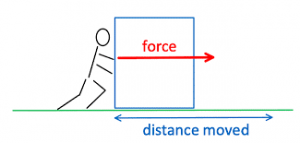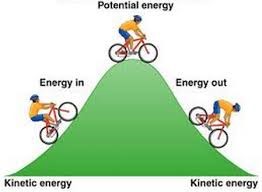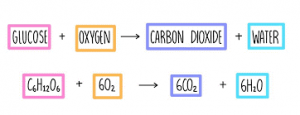In this post, I want to dive into one particular topic, energy, because it causes a lot of confusion amongst learners and parents of learners. I shall attempt to show why it is confusing and to then alleviate it, with any luck!
Keywords in Energy
This issue with terminology is particularly prevalent within this topic.
We use many of the words within these topics in everyday life a lot.
- ‘My phone ran out of power.’
- ‘I have no energy today.’
- ‘I had to force myself to do it.’
Some of these uses are spot on, some are in the right area, and some are way off.
So, let us make sure we understand some of these words more clearly so as we can understand our children when they are talking about them at school and, even better, so as we can correct our children when they are used incorrectly!
Energy
It comes in many forms, but in a nutshell, it is the ability to make something do something. In textbook speak, we say it is the ability to do work.
Work
Work is what happens when you apply a force to a system over a certain distance:

System
A system can be just thought of as whatever we are imagining or studying in a problem. For example, we might imagine how long it would take for my cup of coffee to cool down by a certain amount. I would measure the parameters of my mug, the coffee, and the temperature of the room it is in. All of this is the ‘system’.
WHY DO PEOPLE LOVE AND HATE SCIENCE?
Transfers
Let us imagine we cycle to the top of the hill. Once we are at the top of the hill, we could roll down again. Now, what energy transfers are taking place?

We can see things are happening and so energy is being used or more accurately transferred. We are walking up the hill and then we’re rolling down it.
At the top of the hill, we can say we have more gravitational potential energy than at the bottom. In moving higher up, and further away from the centre of the planet, we have the potential to allow ourselves to move back down again and so we have this potential energy stored within us as such. As we allow ourselves to roll down the hill we start moving faster and faster. We are gaining kinetic energy whilst at the same time losing gravitational potential energy. This is an example of an energy transfer.
So where did the energy come from to get us up the hill in the first place?
Food, right? We ate some food and that gave us the energy to move up the hill. The food contained chemical energy which is a type of energy locked up in atoms and molecules which can be released using a chemical reaction. The chemical reaction which released this chemical energy is called respiration.
Once again, we can see a potential misconception. Respiration is not breathing! It is a chemical reaction that happens inside our cells in which the sugars from the food we have eaten are reacting with the oxygen we have breathed in and produce carbon dioxide and water vapour. Although the purpose of the reaction is to release energy which is used, amongst other things, to contract our muscles and allow us to move up the hill. The transfer here is chemical to kinetic energy.

LEARNING SCIENCE – IS THERE A SCIENCE TO IT?
Conservation
And what about the food we ate? Where did that get the energy from? Well, if it was meat, the animal from which it came may have eaten meat and/or plants. Plants get their energy from the sun via photosynthesis. This comes up again in food chains and webs.
The main thing to take away from this is that energy is never created or destroyed. It is only transferred from one type to another. There has always been the same amount of energy in the universe, but where it is and in what form changes constantly.
Dissipation
Once you’ve rolled down the hill, you have less energy from ascending it and you do not have the gravitational energy because you’re at the bottom again and you’re not moving so you do not have kinetic energy either. So where is it now? We can say it has been dissipated throughout the surroundings. The atoms and molecules are jiggling a little bit faster than they were before, but it has been spread out so much the difference cannot be measured and is no longer useful.
9 THINGS TO ASK A PRIVATE TUTOR – BEFORE YOU BOOK THEM
Conclusion

So, hopefully, you now have a better idea about what energy is and how it can be transferred from one form to another. If you feel you do not completely understand it that is quite normal. Many scientists still do not feel they completely understand it either!
But… that is what science is all about. Expecting you will never know everything about how things work, but to keep trying anyway!
A bit about the author, Paul H:
 Paul is a qualified and experienced Physics, Maths, and Science teacher, now working as a full-time tutor, providing online tuition using a variety of hi-tech resources to provide engaging and interesting lessons. He covers Physics, Chemistry, Biology, and Science from Prep and Key Stage 3 through to GCSE and IGCSE, plus teaches Physics, Maths, and Chemistry to A-Level across all the major Exam Boards.
Paul is a qualified and experienced Physics, Maths, and Science teacher, now working as a full-time tutor, providing online tuition using a variety of hi-tech resources to provide engaging and interesting lessons. He covers Physics, Chemistry, Biology, and Science from Prep and Key Stage 3 through to GCSE and IGCSE, plus teaches Physics, Maths, and Chemistry to A-Level across all the major Exam Boards.


